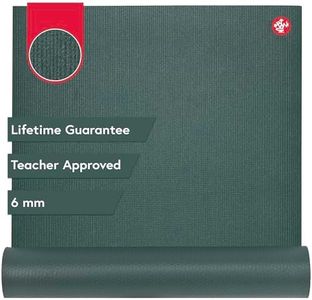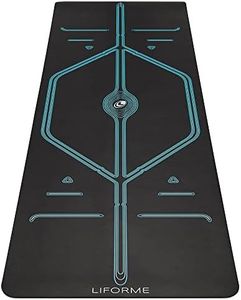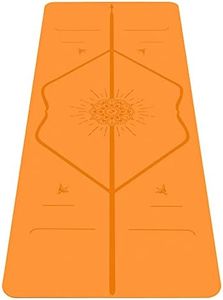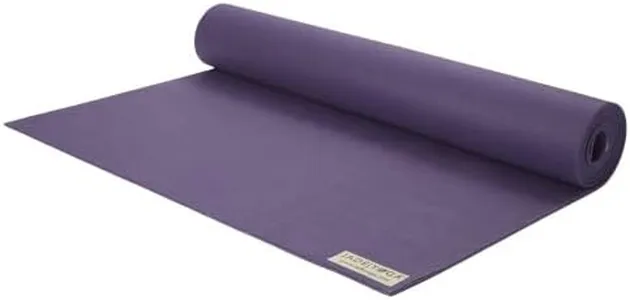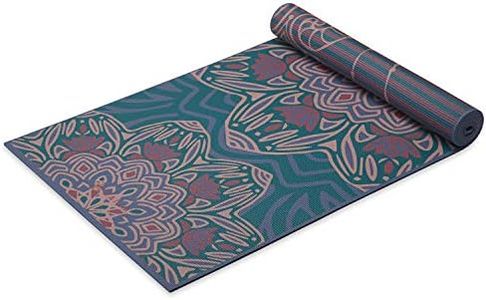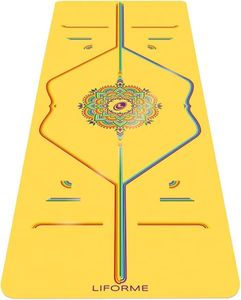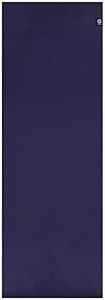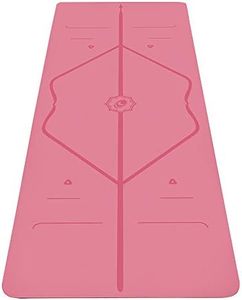We Use CookiesWe use cookies to enhance the security, performance,
functionality and for analytical and promotional activities. By continuing to browse this site you
are agreeing to our privacy policy
10 Best Hot Yoga Mats
From leading brands and best sellers available on the web.By clicking on a link to a third party's website, log data is shared with that third party.
Buying Guide for the Best Hot Yoga Mats
Choosing the right hot yoga mat can make your practice much more comfortable and enjoyable. Hot yoga involves a lot of sweat, heat, and movement, so it's important to select a mat that keeps you safe, stable, and supported. Think about your own practice: do you sweat a lot? Do you want something easy to clean? Are you looking for extra cushioning? Knowing your preferences and how you practice hot yoga will help you match your choice to your needs.Grip and TractionGrip refers to how well the mat prevents slipping, even when wet with sweat. Good traction is especially critical in hot yoga, where you are likely to sweat a lot. Mats with high grip will help you hold poses safely and avoid injuries. Generally, mats are marketed as 'non-slip' and some are made with materials that actually get grippier when moist. If you do lighter yoga or don’t sweat a lot, medium grip may work, but for hot yoga, opt for a mat specifically designed for superior grip in wet conditions.
MaterialYoga mats are made from a variety of materials, including natural rubber, PVC, TPE, and cork. Each material reacts differently to heat and moisture. Natural rubber and cork typically offer better grip and are more eco-friendly, but they can be heavier. PVC mats are lighter and often more affordable but may lose traction when wet. Select a material based on your preference for feel, how much you value sustainability, and if you are sensitive to textures or allergies.
Thickness and CushioningThe thickness of the mat affects how much cushioning and support your joints receive during practice. Thin mats (1-3mm) are very portable and provide a solid connection to the floor, but may lack comfort during long poses. Standard mats (4-6mm) balance comfort and stability for most users, while thick mats (over 6mm) offer the most cushioning for sensitive knees or wrists but can reduce stability in balance poses. If you value portability, go thinner; if you need joint support, select medium to thick.
Absorbency and Sweat ManagementSome mats are designed to absorb sweat, preventing puddles from forming on the surface. Others repel moisture and rely on a towel placed on top. High absorbency is key if you sweat heavily, allowing you to maintain grip and avoid slipping. If you sweat less or prefer cleaning an easily wiped surface, a less absorbent mat or using a yoga towel may suffice. Consider your personal sweating level and cleaning preferences to choose the right one.
Easy to CleanAfter hot yoga, mats can become quite dirty from sweat and bacteria. Some mat materials are easy to clean with a quick wipe, while others require more careful maintenance. If you practice hot yoga frequently or share your mat, look for a mat that is advertised as easy to clean or antimicrobial to maintain hygiene. Consider how much effort you are willing to spend on cleaning your mat after each session.
Weight and PortabilityThe weight of a yoga mat can matter if you often carry it to a studio or travel. Lightweight mats are easier to transport but may compromise on cushioning and durability. Heavier mats tend to stay put better and offer more stability but can be cumbersome to move. Think about whether you need to carry your mat often or leave it in one place, and choose according to your lifestyle.



